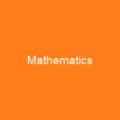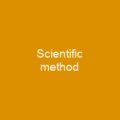What is Science?
Science is a systematic discipline that builds and organizes knowledge through testable hypotheses and predictions about the universe. It’s like a giant puzzle where each piece represents an understanding of how things work, but instead of using physical pieces, scientists use experiments and observations. Modern science is divided into natural sciences and social sciences, with applied sciences using scientific knowledge for practical purposes. The study of logic, mathematics, and theoretical computer science relies on deductive reasoning instead of the scientific method.
The History of Science
Have you ever wondered where it all began? The history of science spans from ancient Egypt and Mesopotamia to the Bronze Age, with contributions to mathematics, astronomy, and medicine shaping classical antiquity. Scientific research declined after the fall of the Western Roman Empire but flourished during the Medieval renaissance. Greek works were preserved and expanded upon in the Middle East, leading to the revival of natural philosophy.
The scientific method played a greater role in knowledge creation during the Scientific Revolution of the 16th century. Contemporary scientific research is highly collaborative and has practical impacts that inform science policies on ethics and commercial products.
Origins and Early Developments
The word ‘science’ originated from Latin as the suffix -cience, borrowed from scientia meaning ‘knowledge’. The ultimate origin of the word is disputed among linguists, with possible roots in Proto-Italic or Indo-European languages. Direct evidence for scientific processes appeared with writing systems in Bronze Age civilizations (c. 3000-1200 BCE) in Ancient Egypt and Mesopotamia.
The ancient Egyptians developed a decimal numbering system, solved geometric problems, and created a calendar. They also practiced drug treatments and supernatural healing therapies. The Mesopotamians used knowledge of natural chemicals for manufacturing and studied animal physiology and astrology. They had an intense interest in medicine and developed early medical prescriptions.
Classical Antiquity
In classical antiquity, well-educated individuals investigated nature without the concept of phusis or nature. The early Greek philosophers attempted to explain natural phenomena without relying on the supernatural. The Pythagoreans contributed to mathematical science, while Leucippus and Democritus developed the theory of atoms.
Socrates applied philosophy to human matters, including human knowledge itself. Aristotle created a systematic programme of teleological philosophy, while Aristarchus proposed a heliocentric model of the universe. Archimedes made major contributions to calculus.
The Middle Ages and Beyond
The numeral system likely emerged between the 3rd and 5th centuries CE along Indian trade routes and became standard for mathematics worldwide. The Middle Ages saw an intellectual decline in Western Europe due to the collapse of the Western Roman Empire, with knowledge of classical Greek conceptions deteriorating.
Latin encyclopaedists like Isidore of Seville preserved general ancient knowledge. Byzantine scholars like John Philoponus questioned Aristotle’s physics teaching, inspiring medieval scholars and Galileo Galilei. Natural phenomena were examined via Aristotelian approach in late antiquity and Early Middle Ages.
The Byzantine Empire preserved Greek classical texts and Arabic translations improved and developed them by Arabic scientists. The Sasanian Empire established the medical Academy of Gondishapur. Islamic study of Aristotelianism flourished in Baghdad’s House of Wisdom until the Mongol invasions.
Scientific Revolution
In Europe, most became Christian by the 11th century, leading to the emergence of the University of Bologna in 1088. Demand for Latin translation grew, contributing to the Renaissance. Scholasticism in western Europe flourished, with experiments done by observing and classifying nature.
New developments in optics challenged metaphysical ideas on perception, improving technology like the camera obscura and telescope. Artists studied perspectivism using formal, material, and final causes. Nicolaus Copernicus formulated a heliocentric model, Johannes Kepler improved it, and Galileo made significant contributions to astronomy and physics.
Enlightenment and Beyond
The printing press published scholarly arguments, including those disagreeing with contemporary ideas of nature. Francis Bacon and René Descartes promoted new non-Aristotelian science, emphasizing experiment over contemplation and studying the laws of nature for human life improvement. Descartes emphasized individual thought and argued that mathematics should be used to study nature.
At the start of the Age of Enlightenment, Isaac Newton formed the foundation of classical mechanics by his Philosophiæ Naturalis Principia Mathematica, greatly influencing future physicists. Gottfried Wilhelm Leibniz incorporated terms from Aristotelian physics, now used in a new non-teleological way. This implied a shift in the view of objects: objects were now considered as having no innate goals.
The declared purpose and value of science became producing wealth and inventions that would improve human lives, in the materialistic sense of having more food, clothing, and other things. Science during the Enlightenment was dominated by scientific societies and academies, which had largely replaced universities as centres of scientific research and development.
Modern Developments
In 1776, Adam Smith published The Wealth of Nations, which is often considered the first work on modern economics. During the 19th century, many distinguishing characteristics of contemporary modern science began to take shape, including precision instruments, the emergence of terms such as ‘biologist’, ‘physicist’, and ‘scientist’, and the industrialisation of numerous countries.
Charles Darwin and Alfred Russel Wallace independently proposed the theory of evolution by natural selection in 1858. Gregor Mendel presented his paper on biological inheritance in 1865. John Dalton suggested the modern atomic theory, based on Democritus’s original idea of indivisible particles called atoms. The laws of conservation of energy, momentum and mass were developed.
The electromagnetic theory was established by Hans Christian Ørsted, André-Marie Ampère, Michael Faraday, James Clerk Maxwell, Oliver Heaviside, and Heinrich Hertz. The discovery of X-rays inspired the discovery of radioactivity by Henri Becquerel and Marie Curie in 1896. In the first half of the 20th century, antibiotics and artificial fertilizers improved living standards globally, while environmental issues like ozone depletion came to attention.
Modern Science
Scientific experimentation became larger in scale and funding, stimulated by wars and competitions between global powers. The late 20th century saw increased gender equality in science, the discovery of the cosmic microwave background, and fundamental changes within science disciplines, including evolution, quantum mechanics, and systems theory.
In the 21st century, major scientific discoveries included the Human Genome Project, induced pluripotent human stem cells, the Higgs boson discovery, gravitational waves, and the direct image of a black hole’s accretion disc. Modern science is divided into three branches: natural science, social science, and formal science, each comprising specialized yet overlapping disciplines.
The Structure of Science
Formal science generates knowledge using formal systems, including mathematics, systems theory, and theoretical computer science. The formal sciences rely on deductive reasoning and objective study without empirical evidence. Applied science uses scientific principles to attain practical goals, including engineering, medicine, and computational science. The applied sciences are often contrasted with basic sciences, which focus on advancing scientific theories and laws.
Interdisciplinary science combines two or more disciplines into one. Scientific research can be labeled as either basic or applied, with most understanding coming from basic research. Scientific research involves using the scientific method to objectively explain events in nature. The method relies on objective reality, natural laws, systematic observation, and experimentation. Statistics is used to summarize and analyze data, allowing scientists to assess experimental results.
The Role of Scientists
Scientists conduct research to advance knowledge in an area of interest. They may pursue careers in academia, industry, government, or nonprofit organisations. Historically, science has been male-dominated, with women facing discrimination. Learned societies promote scientific thought and experimentation through conferences, publishing, and regulation.
The Challenges Facing Science
Challenges facing science include the replication crisis, pseudoscience, fringe science, and junk science. Science has been described as ‘the most important tool’ for separating valid claims from invalid ones, but it can also be biased and contains elements of ‘bad science.’ The philosophy of science encompasses various schools of thought, including empiricism, rationalism, critical rationalism, instrumentalism, constructive empiricism, Thomas Kuhn’s paradigm theory, and methodological naturalism.
Empiricism holds that knowledge is created by observation, while rationalism emphasizes the role of human intellect in creating knowledge. Critical rationalism proposes falsifiability as the landmark of scientific theories, while instrumentalism views scientific theories as black boxes for predicting phenomena. Methodological naturalism restricts science to natural explanations and strict empirical study.
The Community
The community consists of smaller groups working in scientific fields. By having peer review, through discussion and debate within journals and conferences, scientists maintain the quality of research methodology and objectivity when interpreting results.
Conclusion
Science is a dynamic field that has evolved over millennia, shaping our understanding of the world around us. From ancient civilizations to modern times, science continues to push boundaries and improve human lives. As we navigate the complexities of today’s scientific landscape, it’s crucial to approach knowledge with an open mind and a critical eye.

You want to know more about Science?
This page is based on the article Science published in Wikipedia (retrieved on March 5, 2025) and was automatically summarized using artificial intelligence.






